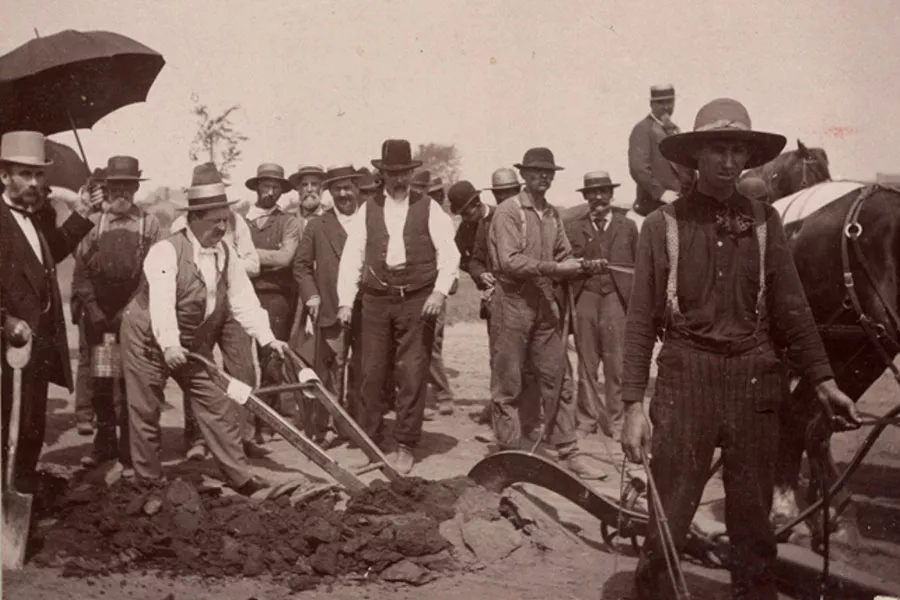Triumph: Grand Boulevard
Industrialization had left American cities so crowded and filthy by the mid- to late-1800s that city planners became increasingly interested in building wide-open parks and boulevards. In the early 1870s, progressive Detroiters suggested the construction of a broad avenue encircling the city, ornamented by stately homes and lush greenery, for the purpose of pleasurable carriage rides through the countryside. In 1879, the Michigan Legislature passed a law creating an unpaid Board of Boulevard Commissioners to create such a parkway, passing through portions of Detroit as well as Hamtramck, Greenfield, and Springwells townships. Some decried the wastefulness of such a road through mostly farmland. The route was chosen in 1880 and ground first broken in 1881, but few portions would actually be improved for some time. Under the leadership of Mayor Hazen S. Pingree, the city dedicated more resources to the project. Alderman James Lauder broke ground on the boulevard just east of Woodward on August 10, 1891 to begin an initial four miles of grading and paving. Detroit grew well past Grand Boulevard just as predicted, and is now the location of some of the finest homes — and skyscrapers — in the city.

Audio By Carbonatix
[
{
"name": "GPT - Leaderboard - Inline - Content",
"component": "35519556",
"insertPoint": "5th",
"startingPoint": "3",
"requiredCountToDisplay": "3",
"maxInsertions": 100,
"adList": [
{
"adPreset": "LeaderboardInline"
}
]
}
]
Page 19 of 21






